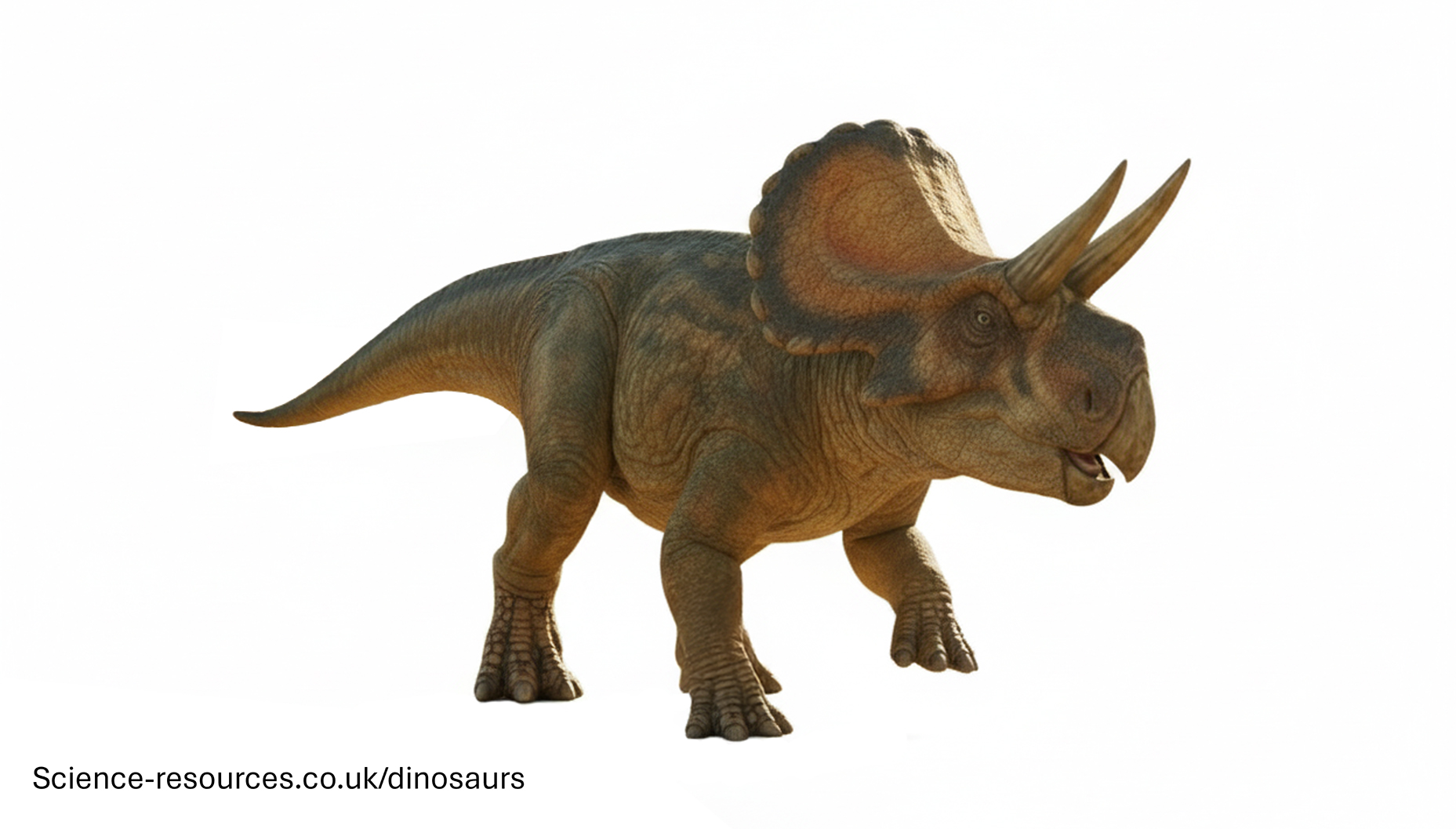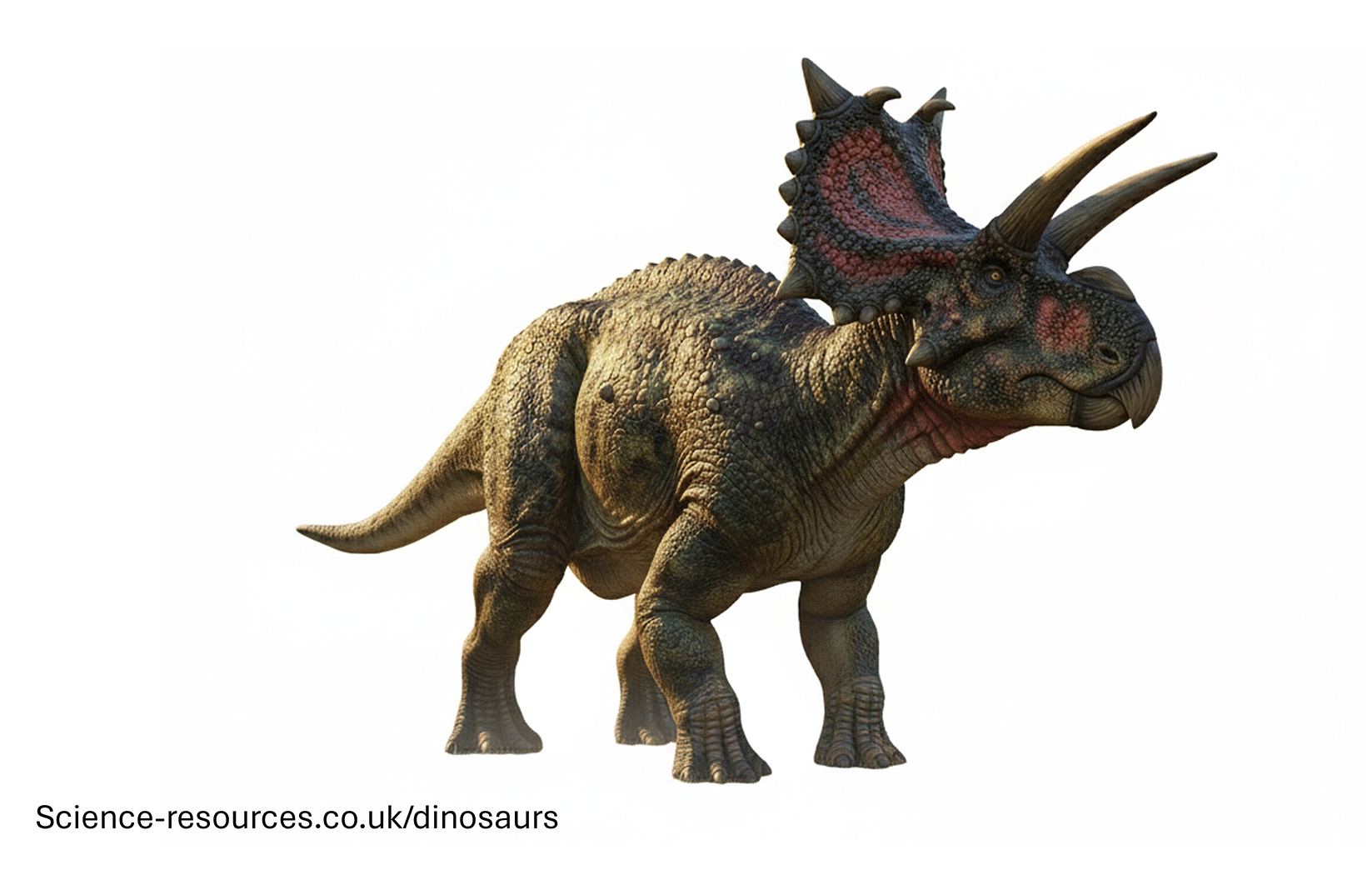You may also be intrested in: Free Dinosaur games
Dinosaur facts: Ceratopsians
You may also be intrested in: Free Dinosaur games
What are Ceratopsians?
Here are some notable Ceratopsians: Known for its three facial horns and large bony frill, Triceratops grew up to 9 metres in length. It used its horns and frill to defend itself against predators and to engage in combat with other Triceratops. This dinosaur had a large, bumpy boss on its nose instead of long horns. It measured about 6 to 8 metres in length and used its boss for defence and display. Styracosaurus had a large frill adorned with six long spikes and a single horn on its nose. It measured about 5 to 6 metres in length and used its spiked frill to ward off attackers. Although smaller than some of its relatives, Protoceratops had a prominent frill and small horns. It measured about 2 metres in length and lived in herds for protection. This dinosaur had a single large horn on its nose and a series of smaller horns on its frill. It measured about 6 metres in length and used its horns for defence and display. Torosaurus was a large plant-eating dinosaur that lived during the late Cretaceous period, around 68 to 66 million years ago. Its name means "perforated lizard" because of the large openings in its frill. Zuniceratops was an extraordinary, horned dinosaur that lived during the mid-Cretaceous Period, around 90 million years ago, in what is now the southwestern United States. Its name means "Zuni horned face", a tribute to the Zuni people of New Mexico, where its fossils were first found. Xenoceratops was a remarkable, horned dinosaur from the Late Cretaceous Period, about 78 million years ago in what is now Canada. Its name means "alien horned face" because of its unique and elaborate arrangement of horns and frill on its head. Pentaceratops was a large, herbivorous dinosaur that lived during the Late Cretaceous Period, around 76-73 million years ago. Its name means "five-horned face" because it had five prominent facial horns. Ceratopsian dinosaurs had various features that helped them survive in their environments:
Notable Ceratopsians
Triceratops
Pachyrhinosaurus
Styracosaurus
Protoceratops
Centrosaurus
Torosaurus
Zuniceratops
Xenoceratops
Pentaceratops
Ceratopsian Features
Q1: What are Ceratopsian dinosaurs?
A1: Ceratopsian dinosaurs are a group of dinosaurs known for their facial horns and bony frills.
Q2: What type of armour did Ceratopsian dinosaurs have?
A2: They had facial horns and bony frills that provided protection against predators.
Q3: What did Ceratopsian dinosaurs eat?
A3: Ceratopsian dinosaurs were herbivores, feeding on various plants and vegetation.
Q4: How did Ceratopsian dinosaurs use their features?
A4: They used their horns and frills for defence, display, and social interactions.
Q5: What other animals lived alongside Ceratopsian dinosaurs?
A5: They lived alongside carnivorous dinosaurs, other herbivores, marine reptiles, and flying reptiles. Ceratopsian Dinosaur FAQ
You may also be intrested in:
Tags: Ceratopsians, frilled dinosaurs, horned dinosaurs, Ceratopsian facts.






